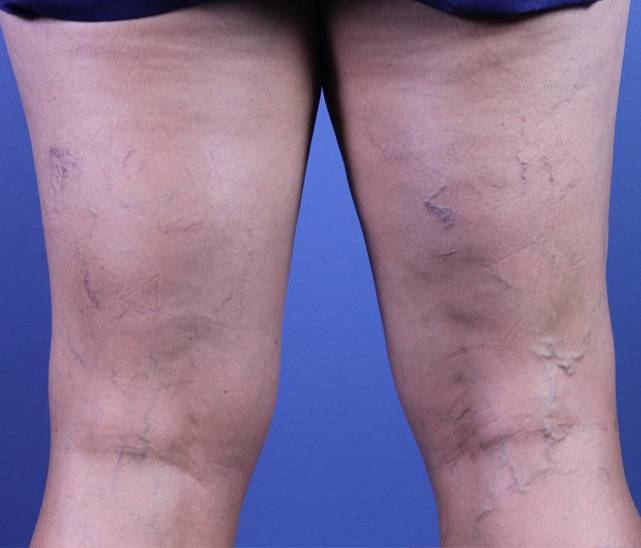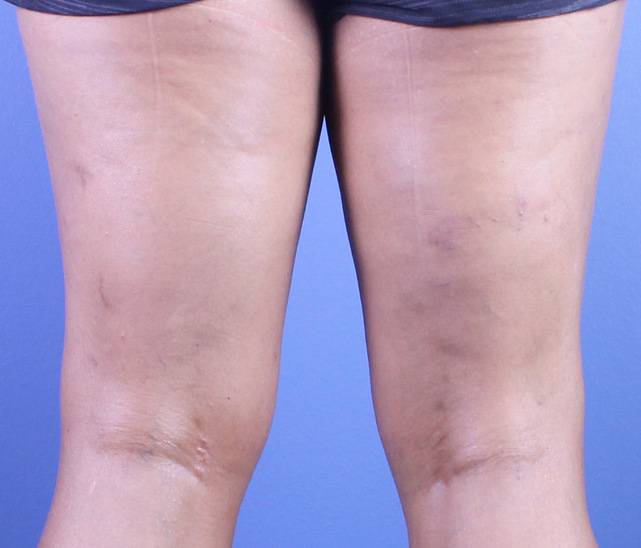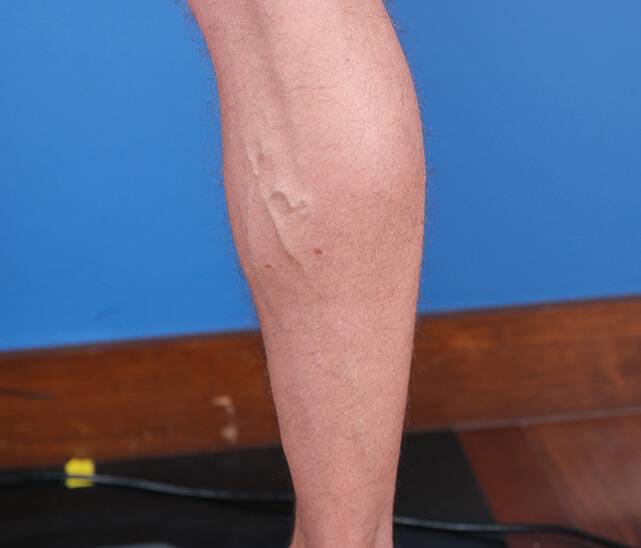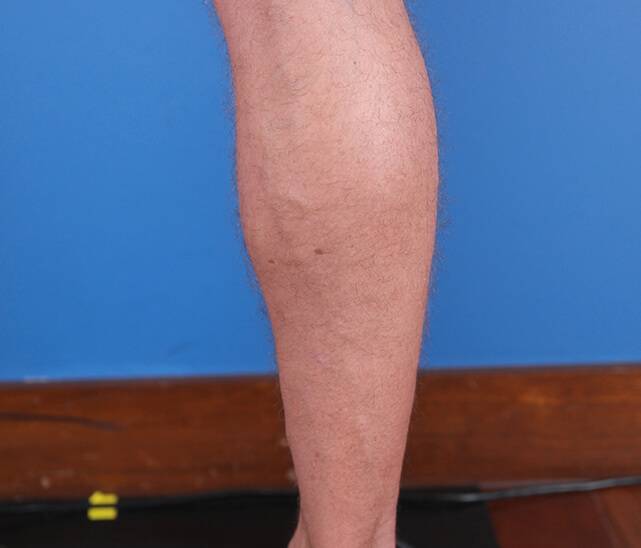

Varicose Vein Treatments
Do you have painful, achy legs? Westlake Dermatology & Cosmetic Surgery offers several vein removal treatment options in Austin, Dallas, Houston, and San Antonio including sclerotherapy, laser treatments, and phlebectomy (vein surgery).
Before and After Vein Removal
View Vein Removal Photo Gallery
Understanding Leg Veins
Leg vein disease is a common medical condition that occurs when valves within these veins become damaged and do not completely close, allowing blood to flow backwards (away from the heart). Increased pressure due to pooling of blood within these leg veins leads to the formation of varicose veins and symptoms such as aching, pain, swelling, and heaviness.
The Progression of Venous Disease
Aside from aesthetic concerns (spider veins), varicose veins of the legs can be associated with significant discomfort and limit regular activities. If untreated, progression to more advanced stages of venous disease may occur over time.
- Stage 1 – Spider Veins: Small, dilated veins in the skin that are of aesthetic concern and not associated with discomfort.
- Stage 2 – Varicose Veins: Large, dilated veins in the subcutaneous fat that may be associated with uncomfortable itching, burning, pain, aching, throbbing, cramping, fatigue, swelling, and heaviness.
- Stage 3 – Leg Edema: With longstanding vein disease, leg swelling can occur in the leg and ankle at the end of the day.
- Stage 4 – Skin Changes: The lower leg and ankle may develop areas of eczema, pigmentation, hardening of the skin, or a white spotty appearance in more advanced vein disease.
- Stage 5/6 – Leg Ulcers: The most advanced form of vein disease, which interferes with the oxygen supply of the skin and leads to breakdown of skin in the ankle.
What Causes Varicose Veins and Spider Veins?
Approximately half of the population over the age of 50 will develop some degree of varicose or spider veins, and women are more commonly affected than men.
You may be at higher risk depending on a number of contributing factors, including:
- Gender
- Genetics/family history
- Prolonged sitting and standing
- Frequent heavy lifting
- Obesity and/or weight fluctuations
- Hormonal changes (pregnancy, menopause, and long-term use of birth control)
- Excessive sun exposure
- Lack of exercise
- Leg injuries
What Treatments are Available for Varicose Veins and Spider Veins?
Depending on the stage and severity of the leg vein disease, there are several treatment methods that may be utilized. These include:
- Sclerotherapy is a safe and effective treatment for spider veins and their feeding veins, as well as small varicose veins. In sclerotherapy, a solution or foam is injected into the affected veins, causing them to completely close and be naturally absorbed by the body.
- Ultrasound-Guided Sclerotherapy enables the physician to find and target veins below the surface of the skin. This is often used to treat abnormal veins connecting varicose veins to deeper sources of abnormal blood flow. It is typically performed in conjunction with endovenous laser therapy.
- Endovenous laser therapy is a minimally invasive surgical procedure performed completely under local anesthesia that targets the root cause of varicose veins and other features of chronic vein disease. The root cause is most often a vein in the inner thigh called the Great Saphenous Vein, although other veins may be affected.
- Micro-incision phlebectomy is a surgical procedure performed under local anesthesia that can completely remove small to large varicose veins in a single outpatient treatment.
Will My Insurance Cover Vein Removal Treatments?
Treatment for varicose veins that are associated with lower extremity itching, pain, swelling, or ulcers is covered by most insurance plans.
Treatment of spider veins and asymptomatic varicose veins is considered cosmetic and requires self-payment.
Our Vein Treatment Specialist
- Daniel Friedmann, MD – Fellowship-Trained, Board Certified Dermatologist and Phlebologist, Director of Westlake Dermatology Clinical Research Center. Dr. Friedmann is a fellow of the American Academy of Dermatology and the American Society for Dermatology Surgery, as well as a member of the American Academy of Cosmetic Surgery, American College of Phlebology, and the American Society for Laser Medicine and Surgery.
Additional Vein Removal Resources
- Video: Vein Disappears after Sclerotherapy
- What’s The Difference Between Varicose Veins And Spider Veins?
- Venous Insufficiency: Symptoms, Causes, Prevention, and Treatments
- 10 Common Vein Treatment Myths
- Case Study: Sclerotheraphy Treatment for Leg Veins
- 9 Simple Ways To Prevent Varicose Veins
- Removing Hand Veins
 Before
Before  After
After  Before
Before  After
After